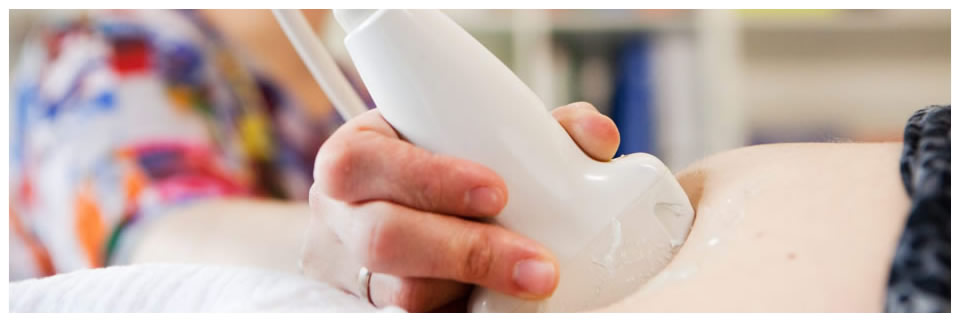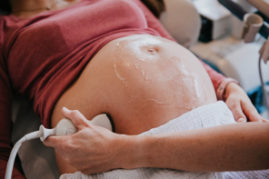This examination using medical ultrasounds looks at structural (physical) abnormalities of the unborn child. Preferably, the SEO is carried out around 20 weeks of amenorrhea (between 18+0 and 22+0 weeks of pregnancy). Hence, it is also known as the 20-week anomaly scan. We aim to complete the SEO before 21+0 weeks. The reason for this is that if abnormalities are found, any follow-up testing is often time-consuming. Once the results of the follow-up tests are available, sufficient time may need to be available to process the new information and to decide whether or not to terminate the pregnancy.
The SEO at a gestational age of 18 to 20 weeks does not find all abnormalities. It depends on the nature of the abnormality how likely it is that it can be seen. Some are too small to be seen at this time and some do not appear until later in the pregnancy. In some cases, the ultrasound imaging may not be optimal either, e.g. due to overweight, scar tissue in the abdominal wall or the current position of the baby.
A normal result of the SEO is reassuring, but it does not rule out that there are abnormalities in the fetus. Not all physical abnormalities can be seen with a medical ultrasound around 20 weeks of pregnancy. In addition, the SEO is not a genetic research either and, for example, mental limitations cannot be determined. It is important for the expectant parents to realize the limitations of SEO.
Pregnant women who decide to have an SEO carried out opt for an examination of the entire baby. The expectant mother cannot choose to not want to be informed about certain abnormalities. In addition to structural abnormalities, other relevant abnormalities may be found that require further analysis/tests (so-called secondary findings).
Follow-up tests
If the SEO rises suspicion of abnormalities, you may be referred to the hospital to carry out a GUO (“Geavanceerd Ultrageluid Onderzoek”, or advanced ultrasound examination). A specially trained gynecologist will perform this examination. There are two types:
GUO type 1: Expectant mothers who need a GUO based on their medical background, because there is a higher risk of abnormalities, are eligible for type 1. They can skip the screening stage.
GUO type 2: Expectant mothers who are referred by their midwife because there is a suspicion of an abnormality are eligible for type 2.
Costs
The SEO is fully covered by your health insurance.
This RIVM owned website provides some more background information.
This information brochure is about screening for physical abnormalities



